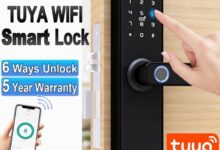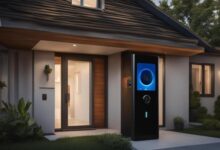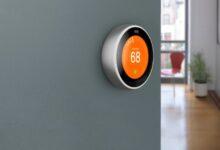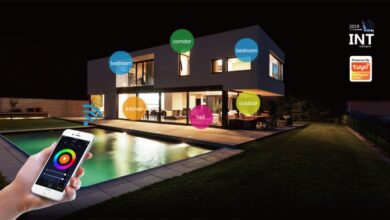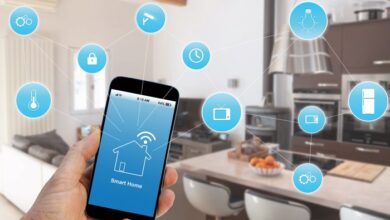WiFi Smart Plugs Your Smart Home Upgrade
WiFi Smart Plugs: They’re more than just a way to remotely control your lamps. These unassuming devices are quietly revolutionizing how we interact with our homes, offering unprecedented control, convenience, and even cost savings. From scheduling your coffee maker to enhancing your home security, the potential applications are surprisingly vast. This deep dive explores the world of WiFi smart plugs, revealing their inner workings, practical uses, and the exciting future they hold.
We’ll unpack the different types of smart plugs available – single outlet, multi-outlet, power strips – and delve into the technical details, including communication protocols and security considerations. We’ll also explore the user experience, addressing common challenges and offering tips for a seamless setup. Finally, we’ll peer into the future, anticipating the innovative advancements that will shape the next generation of smart plug technology.
Get ready to discover how these small devices are making a big impact.
Defining WiFi Smart Plugs
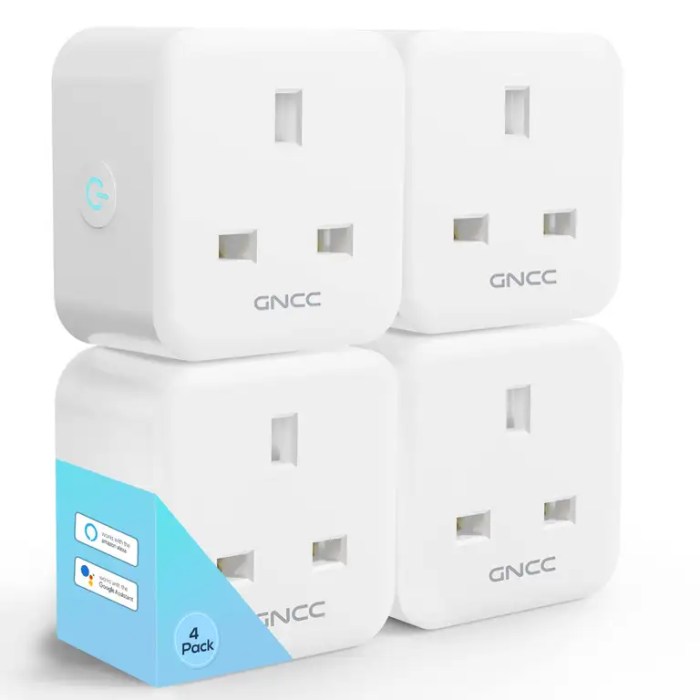
WiFi smart plugs are revolutionizing home automation, offering convenient and efficient control over your electrical devices. They bridge the gap between traditional power outlets and the digital world, allowing you to manage your appliances remotely through a smartphone app or voice assistant. This level of control unlocks a range of possibilities, from automating lighting schedules to monitoring energy consumption.
Understanding the functionality and variations within this technology is crucial for maximizing its benefits.
At their core, WiFi smart plugs are essentially miniature computers embedded within a standard wall plug. They receive instructions wirelessly via your home’s WiFi network and then use this information to either switch power on or off to the connected device. This simple yet powerful functionality forms the basis of a wide array of smart home applications.
Types of WiFi Smart Plugs
The market offers a variety of WiFi smart plugs to suit different needs and setups. The most common types include single-outlet plugs, which control a single appliance; multi-outlet plugs, offering control over multiple devices from a single unit; and power strips, which combine multiple outlets with surge protection and often additional features like USB charging ports. Choosing the right type depends on the number of devices you wish to control and your specific power needs.
Consider factors such as the number of appliances, the power draw of each device, and whether surge protection is a necessity for your setup.
Key Features of WiFi Smart Plugs
Beyond the basic on/off functionality, many smart plugs offer a range of advanced features that enhance their utility. Scheduling allows for automated control, such as turning lights on at sunset or off at a specific time. Remote control lets you manage your devices from anywhere with an internet connection, ideal for ensuring your home’s security or simply pre-heating your coffee maker before you arrive.
Energy monitoring provides valuable insights into your appliance’s power consumption, helping to identify areas where you can save energy and reduce your electricity bill. Some advanced models integrate with other smart home ecosystems, allowing for seamless control within a broader automated environment.
Comparison of Popular WiFi Smart Plug Brands
The following table compares three leading brands of WiFi smart plugs, highlighting their key features and price points. Price fluctuations are common depending on retailer and sales, so these values should be considered approximate.
| Brand | Key Features | Price Range (USD) | Notes |
|---|---|---|---|
| TP-Link Kasa | Energy monitoring, scheduling, voice control compatibility (Alexa, Google Assistant), reliable performance | $15 – $30 | Widely available and known for ease of use. |
| Amazon Smart Plug | Seamless integration with Alexa, simple setup, affordability | $10 – $25 | Best suited for users heavily invested in the Amazon ecosystem. |
| Google Nest Smart Plug | Strong integration with Google Home, energy monitoring, sleek design | $25 – $40 | Premium option with a focus on design and Google Home ecosystem compatibility. |
Technical Aspects of WiFi Smart Plugs
Smart plugs, those seemingly simple devices that add smarts to your everyday appliances, operate on a surprisingly sophisticated level of technology. Understanding their inner workings, from communication protocols to security measures and energy efficiency, is key to harnessing their full potential and ensuring safe and effective use. This section delves into the technical details that underpin the functionality of these ubiquitous devices.
Communication Protocols
WiFi smart plugs primarily rely on Wi-Fi for communication with your home network and, consequently, your smartphone or smart home hub. This allows for relatively easy setup and integration with existing home networks. However, some smart plugs utilize alternative protocols like Zigbee or Z-Wave, which offer advantages in terms of power consumption and network range, particularly in larger homes or those with interference issues.
Zigbee and Z-Wave are mesh networks, meaning signals can be relayed through multiple devices, enhancing reliability and reach. While Wi-Fi offers broad compatibility, Zigbee and Z-Wave often boast lower power consumption and better security features, making them suitable for battery-powered devices or environments prioritizing energy efficiency and enhanced security.
Security Considerations
The security of your smart home is paramount. WiFi smart plugs, while convenient, present potential vulnerabilities if not properly secured. Robust password protection is crucial; avoid weak or easily guessable passwords. Encryption, specifically WPA2 or WPA3, is essential to protect communication between the plug and your network. Regularly updating the firmware of your smart plugs is also vital to patch any known security flaws.
Consider using a strong, unique password for your Wi-Fi network and avoid using the default passwords provided by manufacturers. Regularly checking your router’s security settings and ensuring your smart plug is only connected to your trusted network are also crucial steps. Failing to implement these measures can leave your network and potentially your devices vulnerable to unauthorized access.
Power Consumption and Energy Efficiency
While adding convenience, smart plugs themselves consume a small amount of power, even when the connected appliance is off. This “standby power” can accumulate over time. The energy efficiency of a smart plug depends on its design and features. Look for plugs with energy-saving modes that minimize standby power consumption. Some smart plugs offer energy monitoring capabilities, allowing you to track the energy usage of your appliances and identify potential areas for improvement.
For example, a poorly designed smart plug might consume 1-2 watts even when off, whereas a more efficient model might only consume 0.5 watts. This seemingly small difference can add up significantly over time, especially when multiple smart plugs are in use. By choosing energy-efficient models and utilizing smart features like scheduling, users can effectively minimize their overall energy consumption.
Setting Up and Configuring a WiFi Smart Plug
Setting up a typical WiFi smart plug is generally straightforward. The process typically involves these steps:
- Download the manufacturer’s app to your smartphone.
- Create an account or log in if you already have one.
- Plug the smart plug into a power outlet.
- Follow the app’s instructions to connect the plug to your home Wi-Fi network. This usually involves entering your Wi-Fi password.
- Once connected, the app will allow you to control the plug remotely, set schedules, and potentially monitor energy usage.
Remember to consult the specific instructions provided with your smart plug, as the setup process may vary slightly depending on the brand and model.
Practical Applications of WiFi Smart Plugs
WiFi smart plugs, while seemingly simple devices, unlock a surprising array of possibilities beyond just turning appliances on and off remotely. Their versatility stems from their ability to seamlessly integrate with existing infrastructure and other smart home technologies, offering a cost-effective pathway to automation and enhanced control. This section explores several innovative applications and demonstrates how these unassuming devices can significantly improve convenience, security, and energy efficiency in your home.
Innovative Uses Beyond Basic Appliance Control
Smart plugs are more than just remote power switches. Their capabilities extend to creating sophisticated automated routines and enhancing the functionality of everyday objects. Consider these five innovative applications that demonstrate the true potential of WiFi smart plugs:
- Simulated Occupancy: Program your smart plugs to randomly switch lights on and off while you’re away, creating the illusion of occupancy and deterring potential burglars. This simple strategy can significantly improve home security without the need for expensive alarm systems.
- Automated Watering System: Control a smart plug connected to a garden pump or sprinkler system to automate watering schedules based on time of day or weather conditions. This ensures efficient water usage and promotes healthier plant growth.
- Smart Lighting Scenarios: Beyond simple on/off controls, smart plugs can be integrated with smart assistants to create complex lighting scenes, such as “movie night” (dimmed lights, ambient lighting) or “good morning” (gradually brightening lights). This adds a layer of sophistication to home automation.
- Geofencing Integration: Combine smart plugs with location-based services to automatically turn appliances on or off based on your location. For example, your coffee maker could switch on as you approach home in the morning, or your lights could turn off automatically when you leave for work.
- Energy-Saving Schedules: Utilize smart plugs to schedule appliances to turn off when not in use. For instance, a space heater could be set to switch off at night, or a fan could be programmed to turn off when you leave the room. This can lead to substantial savings on your energy bill.
Smart Home Scenario: Enhanced Convenience and Security
Imagine a scenario where you arrive home after a long day. As you approach, your smart home system, triggered by your smartphone’s location, automatically turns on the lights in your entryway and living room. The smart plug connected to your air conditioner begins cooling the house to your preferred temperature. Meanwhile, security cameras, also connected to smart plugs, start recording, providing an extra layer of security.
As you settle in for the evening, a single voice command adjusts the lighting and activates your entertainment system, all seamlessly controlled through your smart home hub. This scenario highlights the power of smart plugs in creating a truly convenient and secure smart home environment.
Energy Management and Cost Savings
WiFi smart plugs offer significant advantages in energy management and cost savings. By precisely controlling when appliances are powered on and off, you can reduce energy consumption and lower your electricity bill. Monitoring energy usage through the smart plug’s app allows you to identify energy-intensive appliances and make informed decisions about their use. Many smart plugs also offer energy monitoring features, providing data on power consumption that can help you understand your energy habits and identify areas for improvement.
For example, you can see how much energy your television consumes daily, leading to a more conscious approach to its usage. The cumulative effect of these small changes can lead to substantial savings over time. This approach is especially beneficial for appliances that consume significant energy, such as heaters, air conditioners, and computers, often left running unnecessarily.
Comparison with Other Smart Home Automation Devices
While smart plugs are a valuable part of a smart home ecosystem, they differ from other automation devices in their functionality and scope. Unlike dedicated smart switches that replace existing wall switches, smart plugs work with existing outlets, offering a more flexible and non-invasive installation method. Compared to more complex automation systems, smart plugs offer a simpler and more affordable entry point into smart home technology.
However, their functionality is limited to on/off control of appliances plugged into them, unlike smart lighting systems which can adjust brightness and color temperature. Smart plugs excel in their ease of use and broad compatibility, making them a versatile addition to any smart home setup, whether a beginner’s system or a complex, fully integrated network.
User Experience and Considerations
Seamless integration into a smart home ecosystem is paramount, yet the reality for many users can be a frustrating experience riddled with connectivity issues and confusing interfaces. Understanding the potential pitfalls and prioritizing user-friendliness is crucial for both manufacturers and consumers navigating the world of WiFi smart plugs. This section will explore common user challenges, highlight the importance of intuitive design, and provide a practical guide for smart plug selection and troubleshooting.
Obtain a comprehensive document about the application of Home Automation Systems that is effective.
The user experience surrounding WiFi smart plugs hinges on a simple yet powerful concept: ease of use. A poorly designed app or a complicated setup process can quickly turn a potentially convenient device into a source of frustration. Conversely, a well-designed system can enhance the overall smart home experience, making automation effortless and enjoyable. This is particularly true for users who are not technically inclined, as a streamlined experience minimizes the learning curve and encourages adoption.
Challenges in Using WiFi Smart Plugs
Several factors can contribute to a less-than-ideal user experience with WiFi smart plugs. These issues, while often solvable, can significantly impact user satisfaction and highlight the need for improved design and support.
- Connectivity Problems: Weak WiFi signals, network congestion, and compatibility issues with specific routers can lead to unreliable connections and difficulty controlling the plug remotely.
- App Usability: Clunky interfaces, confusing menus, and a lack of clear instructions can make even basic tasks, such as scheduling timers, challenging for users.
- Device Compatibility: Not all smart plugs work with all smart home ecosystems (e.g., Alexa, Google Home). Incompatibility can lead to frustration and limit the functionality of the device.
- Security Concerns: Poorly secured smart plugs can be vulnerable to hacking, potentially compromising the user’s home network and personal data. This is a significant concern that requires careful consideration during both the manufacturing and purchasing processes.
Importance of User-Friendly Interfaces and Intuitive App Designs, WiFi Smart Plug
Intuitive app design is crucial for maximizing user satisfaction and ensuring widespread adoption of smart plugs. A well-designed app should be easy to navigate, even for first-time users. Features like clear visual cues, simple instructions, and contextual help can significantly improve the user experience. For instance, a color-coded interface could clearly indicate the status of each connected device, while a step-by-step setup guide can alleviate common connectivity issues.
The app should also offer robust support features, such as a FAQ section and contact information for technical assistance.
Factors to Consider When Purchasing a WiFi Smart Plug
Choosing the right WiFi smart plug requires careful consideration of several key factors. A well-informed purchase can significantly improve the user experience and ensure the device meets individual needs. This involves a balance of functionality, cost, and compatibility with the existing smart home ecosystem.
- Compatibility: Ensure the smart plug is compatible with your existing smart home ecosystem (e.g., Alexa, Google Home, Apple HomeKit) and your router’s WiFi standard (e.g., 2.4GHz or 5GHz).
- Features: Consider features such as scheduling, energy monitoring, voice control, and remote access. The ideal set of features will depend on individual needs and preferences.
- Price: Smart plugs range in price from budget-friendly options to more premium models with advanced features. Balance your budget with your desired features and the number of plugs needed.
- Brand Reputation: Choose a reputable brand with a proven track record of producing reliable and user-friendly smart home devices. Consider customer reviews and ratings before making a purchase.
- Security: Look for smart plugs that use strong encryption protocols and have regular software updates to address security vulnerabilities.
Troubleshooting Common Issues
Despite careful selection, issues can still arise. Having a structured approach to troubleshooting can save time and frustration.
- Connectivity Problems: Check your router’s WiFi signal strength, try restarting both the plug and your router, and ensure your smartphone is connected to the same WiFi network.
- App Issues: Check for app updates, restart your smartphone, and consider uninstalling and reinstalling the app. If problems persist, contact the manufacturer’s support team.
- Device Malfunction: Try resetting the smart plug to its factory settings, which usually involves pressing and holding a small button on the device for several seconds.
- Scheduling Problems: Verify that the correct time and date are set on both your smartphone and the smart plug. Double-check the scheduling parameters within the app to ensure they are correctly configured.
Future Trends in WiFi Smart Plugs
The humble WiFi smart plug, once a novelty, is poised for a significant evolution. Driven by advancements in artificial intelligence, energy efficiency demands, and evolving user expectations, these ubiquitous devices are on the cusp of becoming far more sophisticated and integrated into our lives. This section explores the key trends shaping the future of WiFi smart plugs, painting a picture of what we can expect in the coming years.
AI and Machine Learning Integration
The integration of AI and machine learning will transform smart plugs from simple on/off switches into intelligent energy managers. Imagine a smart plug that learns your usage patterns, automatically adjusting power to appliances based on your schedule and energy consumption habits. This could involve predicting when you’ll need a device powered on, preemptively turning it on, and even optimizing energy usage during peak hours based on your utility company’s pricing structure – much like Nest Learning Thermostat already does for heating and cooling.
For example, a coffee maker could be automatically switched on just before your usual wake-up time, ensuring a hot brew awaits without unnecessary energy waste during the night. This level of automation will not only improve convenience but also significantly reduce energy bills.
Advanced Energy Monitoring and Management
Beyond simple on/off control, future smart plugs will offer granular energy monitoring capabilities. They will provide real-time data on energy consumption for each connected device, allowing users to identify energy-guzzling appliances and make informed decisions about their usage. This detailed energy monitoring could be displayed through a user-friendly app, potentially with visualizations like graphs and charts showing energy usage trends over time.
Moreover, these advanced features could include functionalities such as setting energy usage limits for specific devices, automatically powering down appliances after a set period of inactivity, and integrating with home energy management systems for holistic optimization. This detailed level of control, akin to what advanced smart home hubs offer, empowers users to actively manage and reduce their environmental footprint.
Predicted Evolution in the Next 5 Years
Within the next five years, we anticipate several key advancements. Firstly, we’ll see a significant increase in the adoption of AI-powered features, moving beyond simple scheduling to predictive energy management. Secondly, the integration of smart plugs with other smart home devices will become more seamless and intuitive, enabling sophisticated automation scenarios. Thirdly, enhanced security protocols will be implemented to address growing concerns about data privacy and device vulnerability.
For instance, we can expect to see more robust encryption methods and multi-factor authentication features built into the smart plugs themselves. Finally, we predict a rise in the availability of smart plugs with integrated power monitoring and surge protection, offering a more comprehensive solution for protecting connected devices and managing energy consumption. Think of a smart plug that not only monitors energy use but also proactively protects your devices from power surges, much like a high-quality power strip, but with the added intelligence of smart home integration.
Visual Representation of Future Smart Plugs
The illustration depicts a sleek, minimalist smart plug with a small integrated display showing real-time energy consumption. The plug itself is subtly embedded within a larger, modular unit that also houses a small, high-capacity battery providing backup power during outages. The modular design allows for easy expansion with additional components, such as sensors for temperature or humidity monitoring, further expanding the functionality of the smart plug beyond simple on/off control.
The colors are muted and sophisticated, reflecting a premium design aesthetic. The overall impression is one of elegance, functionality, and seamless integration into a modern smart home environment. The integrated display is small but clear, providing crucial information at a glance without being overwhelming.
Conclusive Thoughts
From simple appliance control to sophisticated home automation, WiFi smart plugs are transforming how we live. Their versatility, coupled with continuous technological advancements, promises even greater convenience and energy efficiency in the years to come. By understanding their capabilities and potential, you can harness the power of smart technology to create a more comfortable, secure, and cost-effective home environment.
So, take the plunge and experience the smart home revolution – one plug at a time.
